'Something remains of London in 1895'
Chapter 9: '221B' becomes an international classic
A keepsake printed for the 2003, 60th anniversary dinner of The Hounds of the Baskerville (sic).
Up to this point, the history of “221B” has been largely a linear story, a single path forward.
Now the trail shoots off in several directions, and becomes more difficult to trace. I’ve made a few assumptions in this part of our journey, and am happy to be corrected. Still, the goal has been to trace the sonnet from from the beginning to now, and I believe I have many of the main steps along the way. Let’s keep marching on.
Life after Starrett
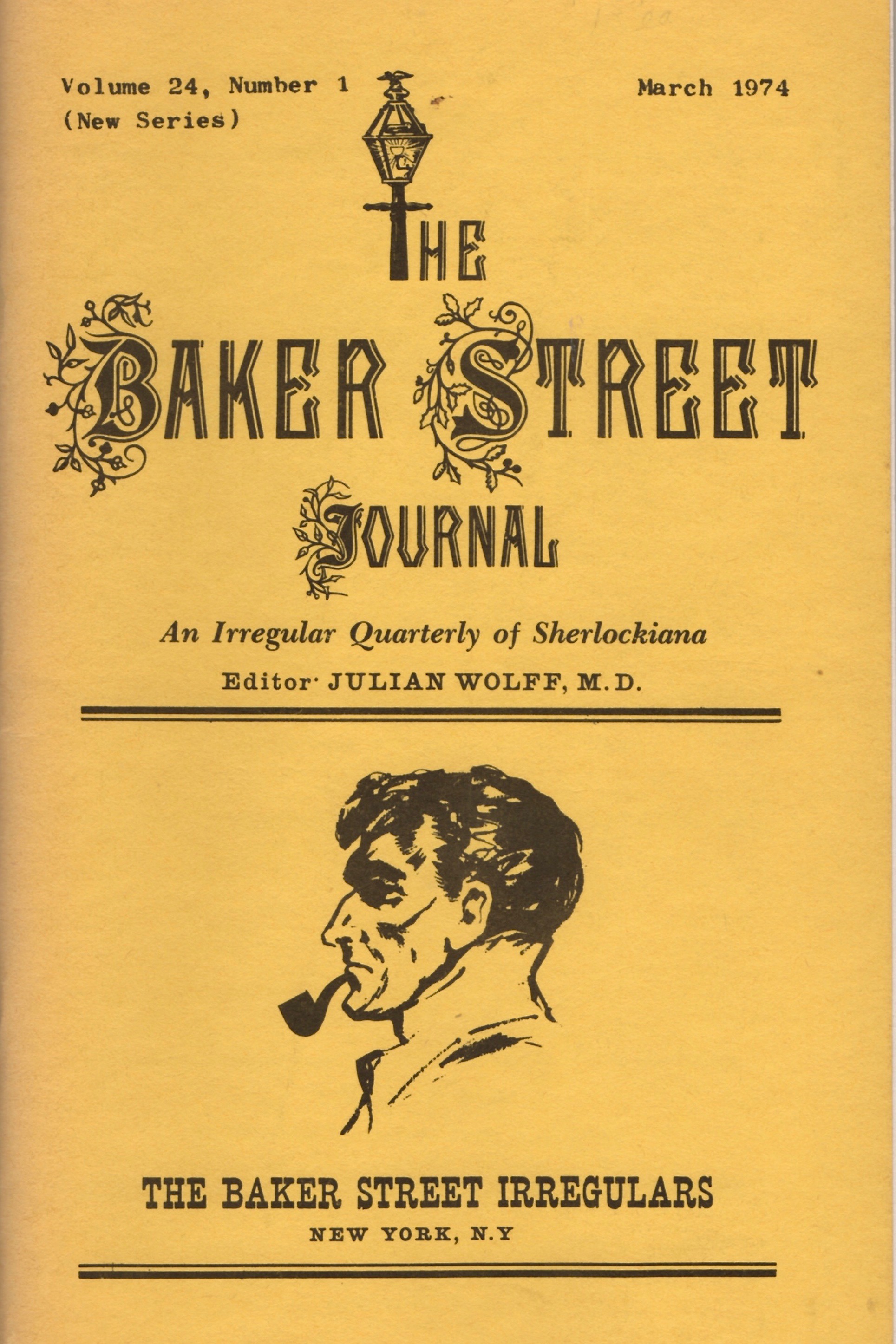
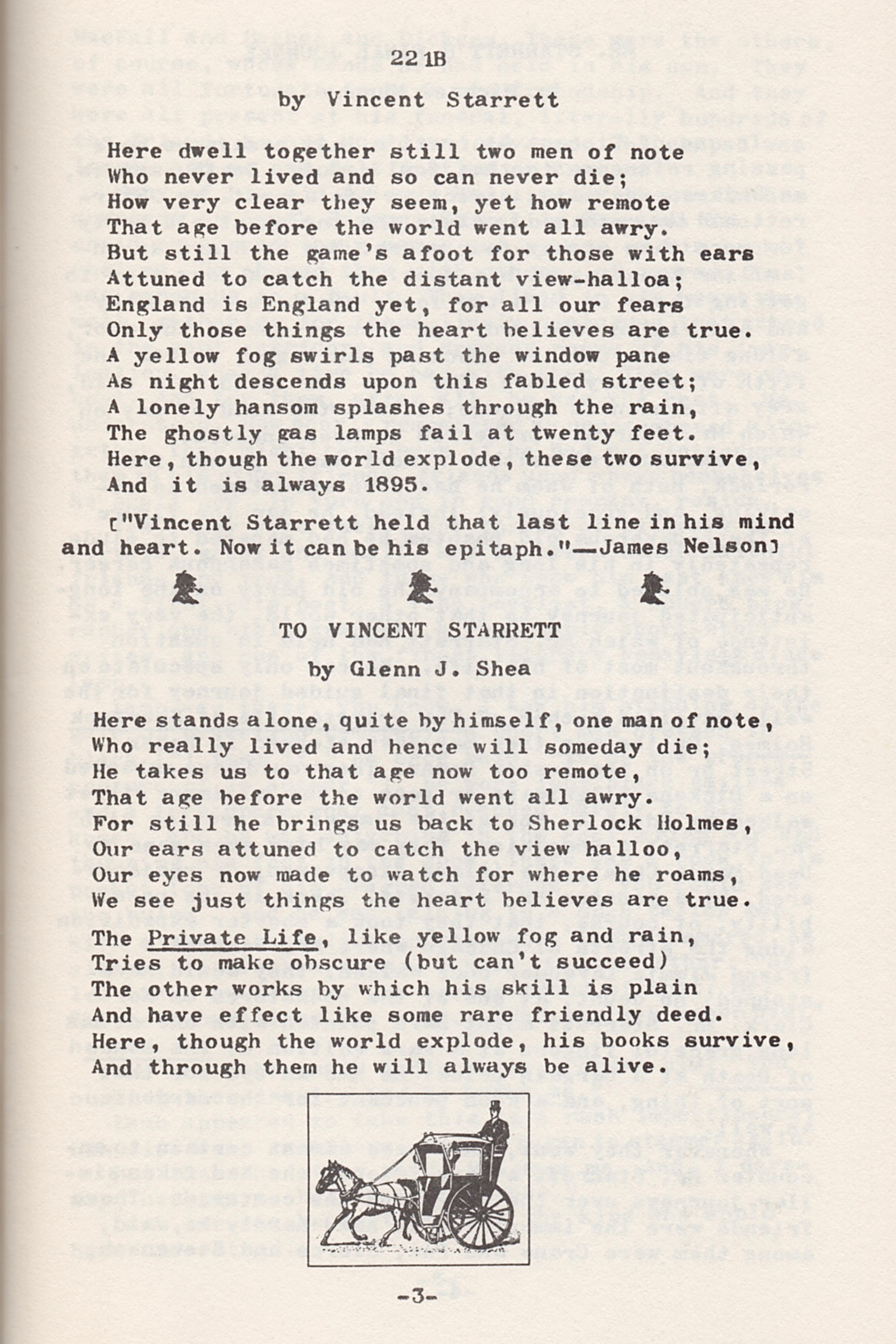
By the time of the Sherlockian boom of the 1970s, “221B” was gaining national renown among growing Sherlock Holmes movement. There are probably several reasons for this.
Starrett’s death in 1974 sparked a revival of interest in his work, especially his major Sherlockian efforts: "The Adventure of the Unique Hamlet,” The Private Life of Sherlock Holmes and “221B” in particular.
It even was recited at the author’s graveside: Robert Hahn, Starrett’s friend, read the poem at his memorial service.
A few months later, Julian Wolff reprinted it in the March 1974 issue of The Baker Street Journal as part of a tribute to one of the group’s first Irregulars.
Julian also had the poem read at Irregular dinners. Although I only attended two of Julian’s dinners, I recall “221B” being read at the end of each to great effect. No doubt this helped to spread the sonnet’s popularity as a “closing” piece to be used at scion gatherings around the country.
Couple this with the enormously popular series of Sherlock Holmes workshops held around the United States by John Bennett Shaw, who usually featured “221B” at some point, often as part of a dinner program. An explosion of scions grew up around the country in John’s wake, and these scions copied his use of the poem.

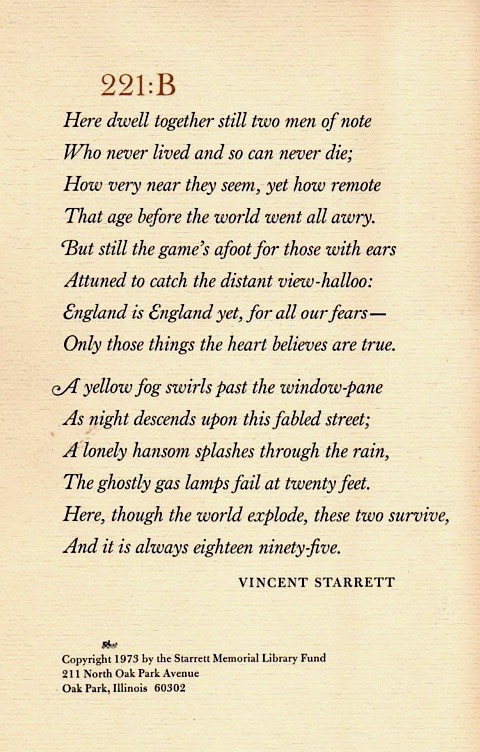

Special editions of the sonnet have been brought out over the decades. Michael Murphy produced a reverent version in 1973 in a limited edition.
‘England itself is embodied in this pair.’
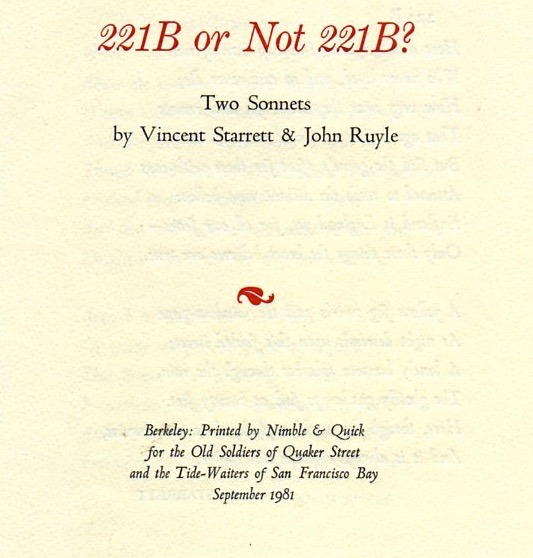
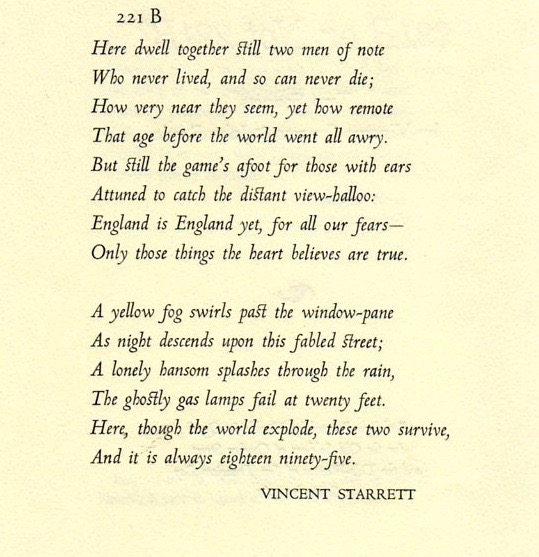
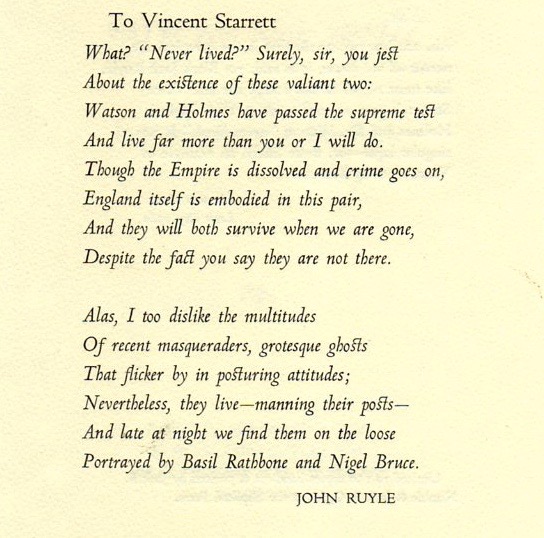

There have also been responses and tributes to the poem.
There are too many examples to pull from for this single post, but here’s one of my favorites.
In 1981, Irregular and talented printer John Ruyle used his press to produce a paean to the sonnet. Ruyle, whose comic Turlock Holmes pastiches are a favorite of mine, took his passion for “221B” one step further, by creating a response to Starrett’s claim that Holmes and Watson never existed.
It reads, in part:
“Though the Empire is dissolved and crime goes on,
England itself is embodied in this pair,
And they will both survive when we are gone,
Despite the fact you say they are not there.”
That Starrett and his sonnet were inextricably linked is obvious from this tribute by August Derleth, the Wisconsin writer who shared many of Starrett’s passions. Derleth wrote this before Starrett’s death, but it was reprinted in Shaking Hands with Immortality: Encomiums for Vincent Starrett, 1886-1974, edited by Michael Murphy and published in Kirkwood, Mo. by The Printery in 1975.
Homage to an Old Irregular
It may well be that Sherlock Holmes
Has gone the way of Enoch Soames,
And that about 221-B
The map is changed unalterably;But yellow fogs still haunt the highways,
The game’s afoot down England’s byways,
And just as long as Vince may survive
Something remains of London in 1895.
International fame

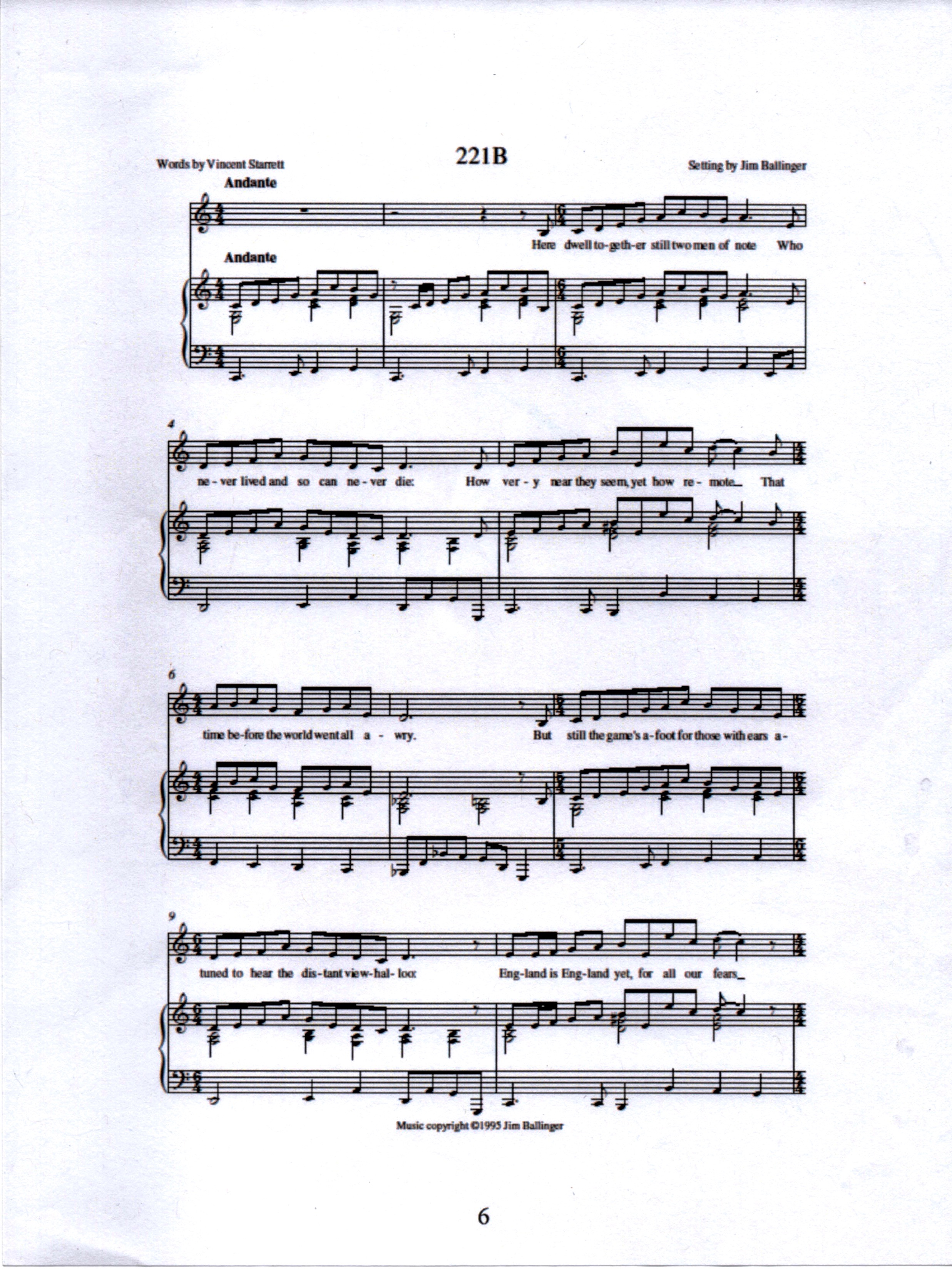
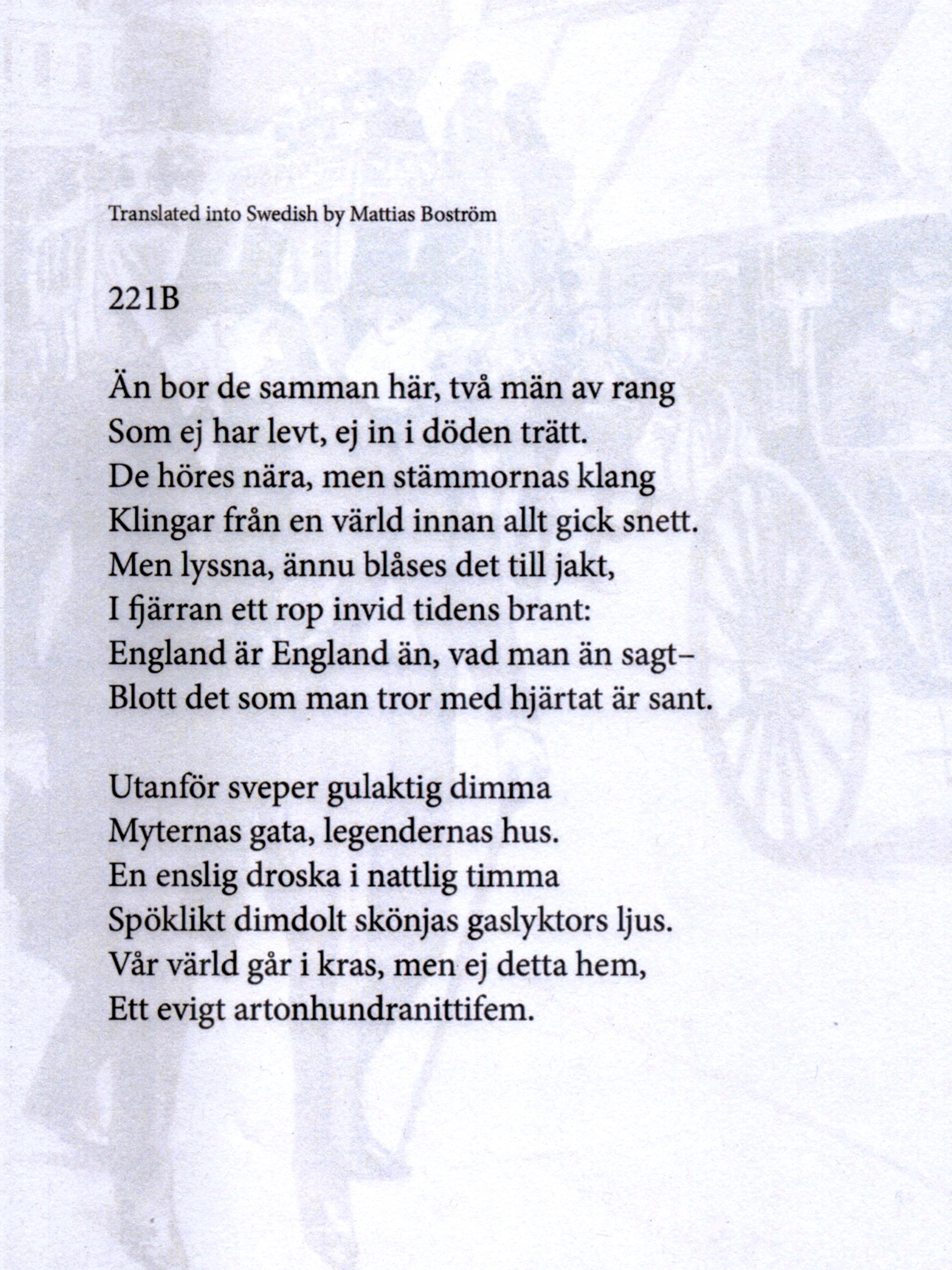
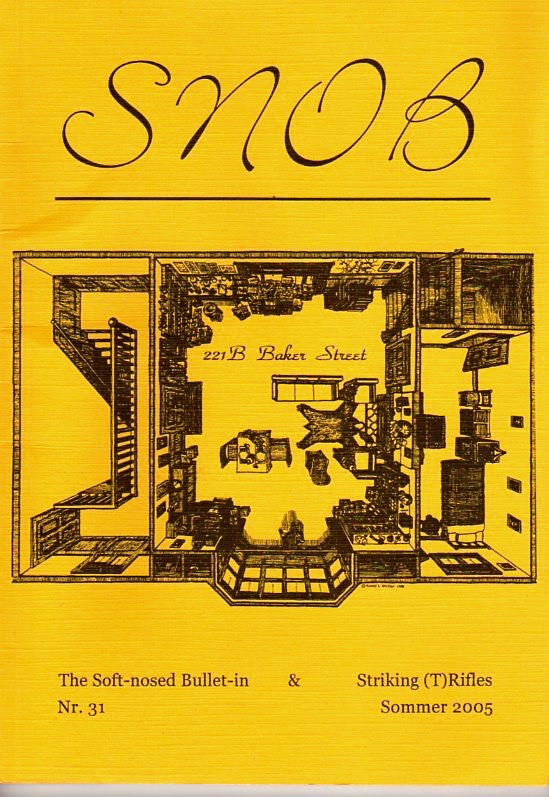
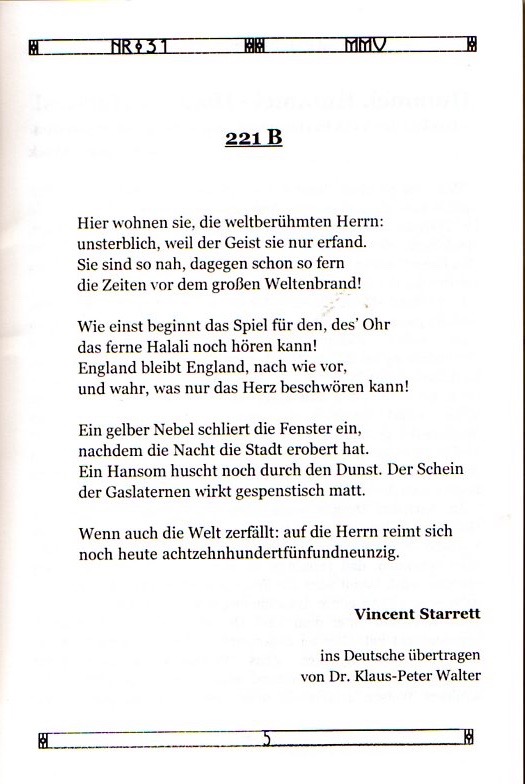
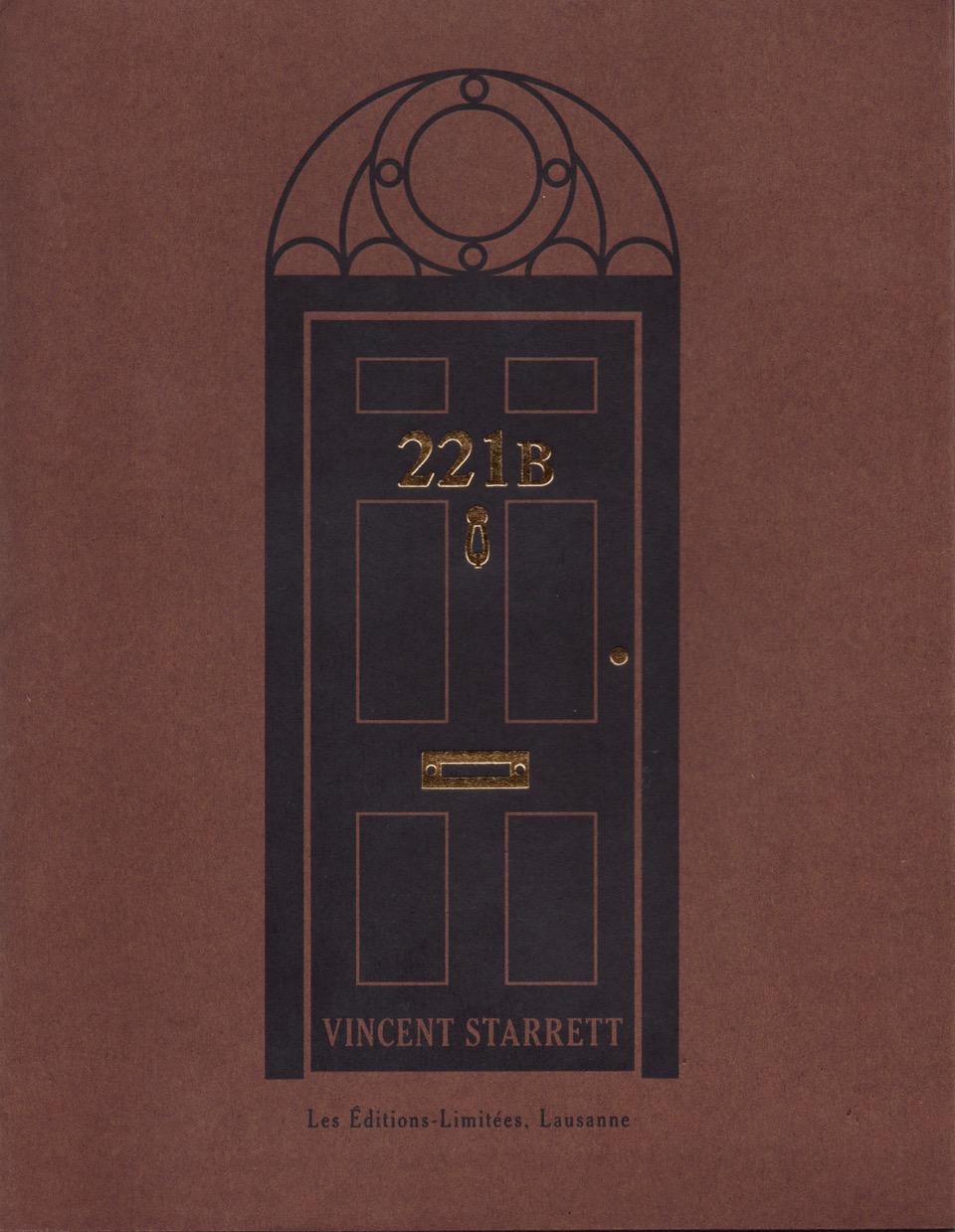
Starrett’s sonnet has also had a European vogue. In fact, the poem has been recited other languages at Sherlock Holmes meetings from Japan to France.
Here are a few examples of its reach:
In 2015, the Baker Street Babes published an online edition featuring multiple translations of the poem. Sherlock Holmes historian Mattias Bostrom provides a Swedish translation, and the publication reproduces the only known musical version of the sonnet, with music by Jim Ballinger.
The German Sherlock Holmes society published a German translation of “221B” in its journal, The Soft-nosed Bullet-in.
And a printer in Lausanne, Switzerland, named Nicolas Regamey produced a lavish version of the poem, translated into French. The leaflet’s cover is a masterpiece alone.
‘Sadly, Starrett considered himself a failure’
And yet, during Starrett’s lifetime, the sonnet “221B” and the rest of his Holmesian writing was not enough to give its author the fame he felt he deserved. Indeed, like Arthur Conan Doyle before him, Starrett yearned for acceptance as a great writer, but was constantly frustrated.
In a perceptive essay, Starrettian Susan Rice in her essential booklet, The Somnambulist and the Detective, has observed:
“Sadly, Starrett considered himself a failure. He aimed to create literature, but felt he missed the mark.”
When he wrote his memoirs, Starrett downplayed his poetry, yet you can clearly hear his frustration for having been thought of as a man who wrote only one memorable book, The Private Life of Sherlock Holmes.
As Rice has noted:
“Starrett’s name does not resound throughout the world a quarter century after his death, but he is not entirely forgotten. He will always be remembered by the two groups I like to think he would have chosen to hold him in their hearts: Sherlockians and bookmen.”
Having traced its history, Chapter 10 will be a consideration of the undying sonnet’s impact on the Sherlockian world.
‘221B’ Chapter Index
Chapter 1: Introduction and Prologue: ‘Where it is always 1895’
Chapter 2: 'So they still live for all that love them well'
Chapter 3: ‘Some of the most dramatic months… of contemporary history’
Chapter 4: ‘Here dwell together still’
Chapter 5: ‘He has done many little things for me’
Chapter 6: ‘A wider circulation’
Chapter 7: ‘Part of a slim volume’
Chapter 8: ‘This poem by my good friend’
Chapter 9: ‘Something remains of London in 1895’
Chapter 10: What is it we love about ‘221B’?
Chapter 11: Afterthoughts and Acknowledgments
Want to chat about this blogpost? Join us at the Studies in Starrett Facebook page:

